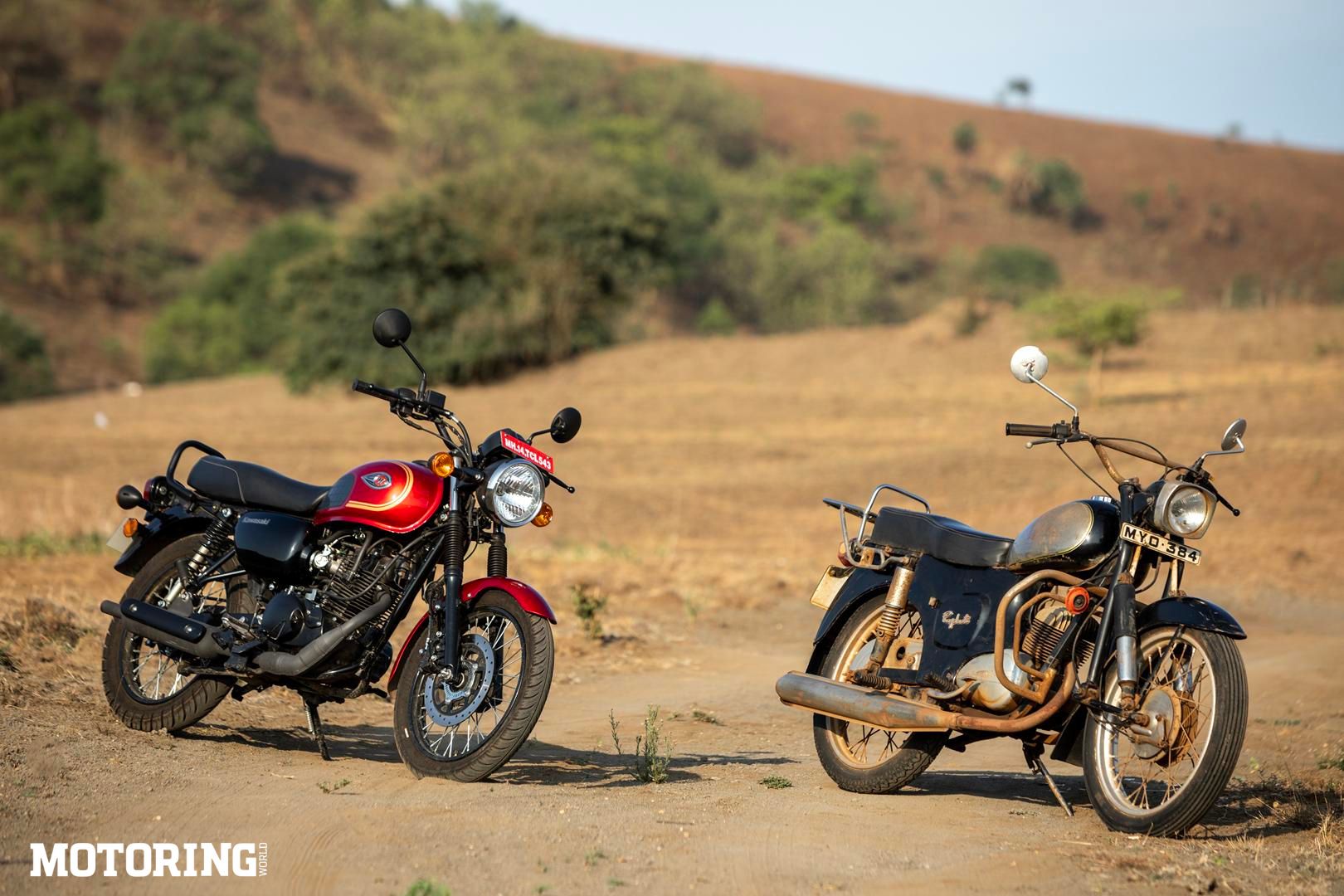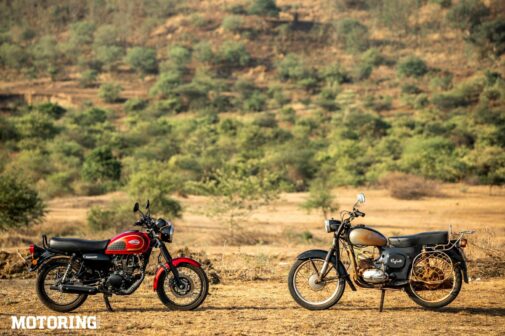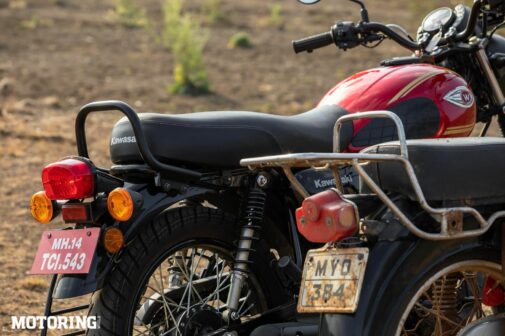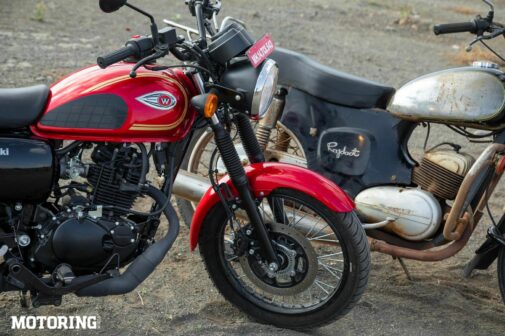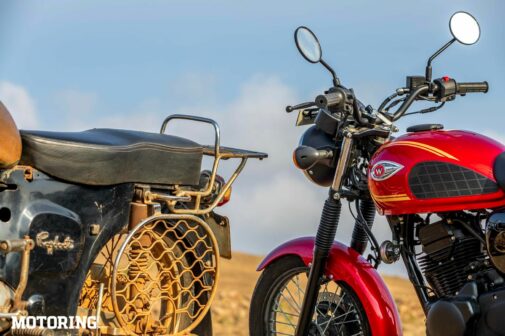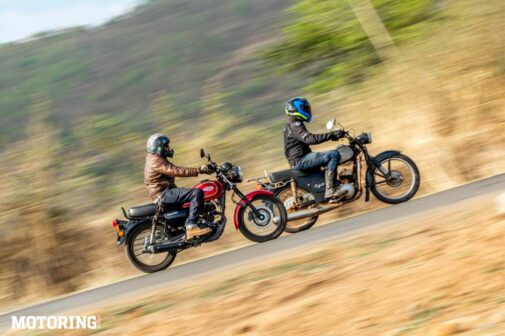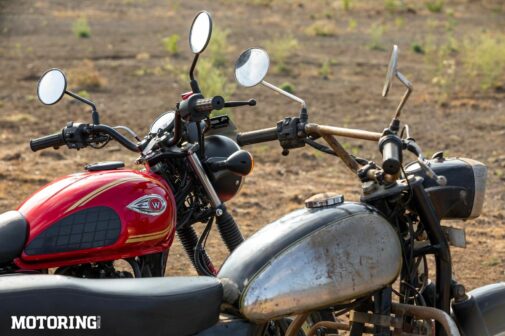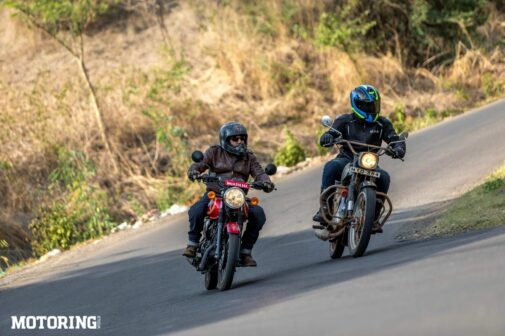Ever since Kawasaki launched the retro-styled W175 in India around September last year, I have been wanting to put it alongside the Rajdoot 175. Somehow the two motorcycles seem to be on the same wavelengths depending on what perspective one looks at them from. The Rajdoot has made a name for itself in the past while staying memorable to date, while the W175 seems to be trying to follow a similar path.
The W175 is Kawasaki’s current mass-market offering, with the idea of giving the consumers a slightly more affordable retro option bearing the Kawasaki branding, the alternative being the more expensive W800. Essentially trying to open up the consumer portfolio to include not only premium buyers, but allowing for everyone to partake in the retro experience without having to really break the bank.
If one thinks about it, in its time the Rajdoot 175 would have fit a similar description, not to mention that somehow everyone had an uncle who owned one at a certain point. The motorcycle of the common man — sturdy, reliable and up for anything thrown its way. By the way, this has been tested by yours truly at the Pune Off-road Expedition, close to a year ago, when it blazed through the course with zeal.
In terms of the overall silhouettes, one can point out the various similarities like the teardrop-shaped fuel tank, the tail lamps, the long, flattish and comfortable seats, not to mention the relaxed and comfy rider triangle. Simplicity is one of the prioritised sentiments when it comes to both motorcycles, and it is very evidently displayed in everything from the mono-pod instrument clusters to the 175cc single-cylinder engines.
Kawasaki may have taken the simplicity factor a little too much to heart, because, even though they have brought us a good motorcycle in the form of the W175, it could still do with a few more features for the price point it is being sold at. Somehow all those concerns tend to fade away as one cruises around on the motorcycle in as relaxed a fashion as can be. A commuter from the stables of Kawasaki, wearing the British W badge nonetheless is something that still makes me chuckle. It is fun, no doubt about that, and it handles well, gliding through traffic and rough roads with ease.
The Rajdoot 175 also has foreign ancestry, considering its Polish roots, and still managed to flourish on Indian soil. Conquering rural India and becoming the steed of choice for those hauling heavy burdens, it has gone on to imprint itself in my mind as something that can never be killed. Like cockroach-Terminators of sorts, these things will just keep on going, although the handling tends to seem questionable at times. The question that remains then, is whether the Kawasaki W175 has it in itself to make a place in history the same way the Rajdoot has managed to.
This Rajdoot itself was in hibernation at Varad’s house in Pune since POE-2022, and after a few initial checks, was woken from its slumber. There were no tantrums or fussing about, but it started up rather eagerly. Like that one friend that you haven’t met in ages, but when you do, they pick up exactly where they left off without skipping a beat. The one emotion that is shared when astride both of these motorcycles is the desire to slow down and enjoy the journey. There is no necessity to rush along at break-neck speeds, but rather to pace oneself, and take in the sights and sounds.
Now, riding them both side by side, being the newer of the two, the W175 tends to grab a little bit of attention off of the Rajdoot, especially in that Candy Persimmon Red colour scheme. The Rajdoot itself has started blending in with the colours of nature with a good deal of patina, but let me assure you, that engine is running strong and will continue to do so for quite a while. Leaning into corners and stopping on a dime might not be its forte, but it sure can pull even now.
The W175 is surprisingly nimble and is pretty stable even at triple-digit speeds, with the disc-drum setup taking care of bringing the motorcycle to a safe and swift halt. Being as light as it is, one would expect the inverse to be true, but somehow Kawasaki has worked that out. Actually, it isn’t that surprising, considering how meticulous and effective Japanese engineering can be. Maybe it actually does the W badge some justice in the end. Still, how far along is it in terms of bringing a smile to a rider’s face?
After all, one would rather have the motorcycles move the soul too and not just the body. Any two-wheeler can do the job of ferrying people from point A to point B, it takes a great deal of dedication and sheer luck for things to fall into place perfectly to make a machine that evokes a rider’s emotions. The Rajdoot has found that sweet spot, and maybe the W175 could too, a little further down the line.





